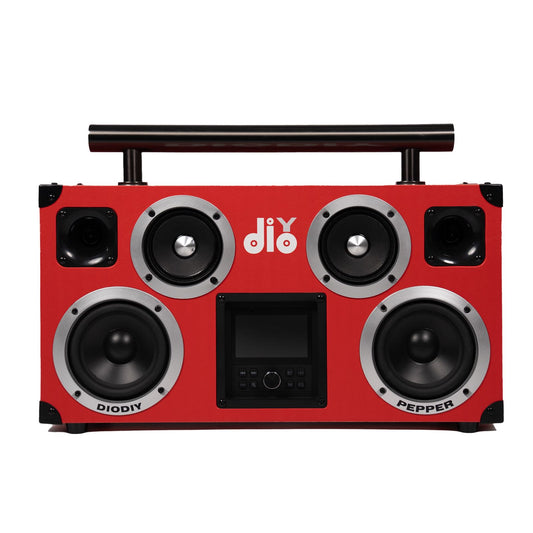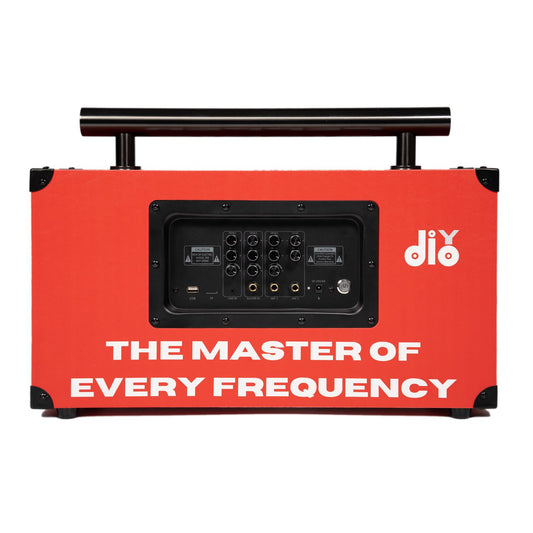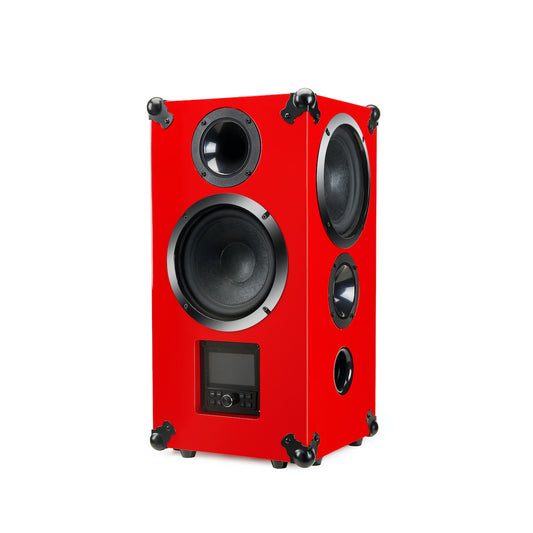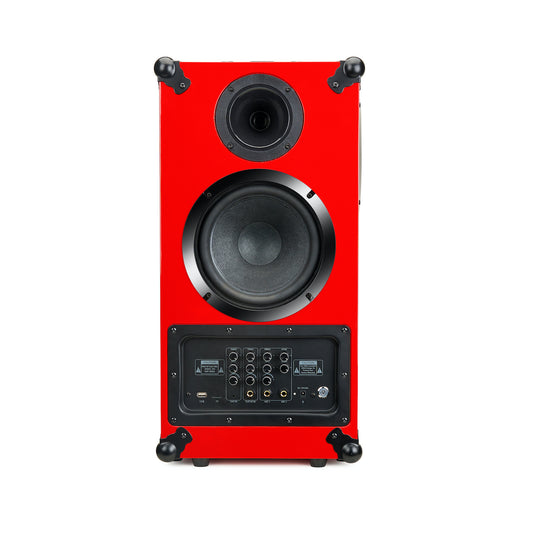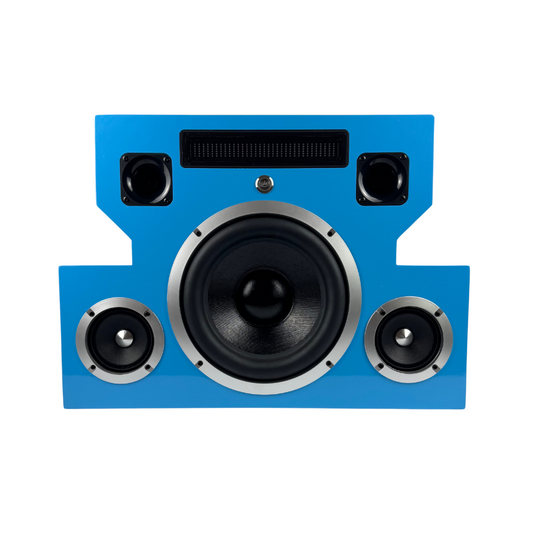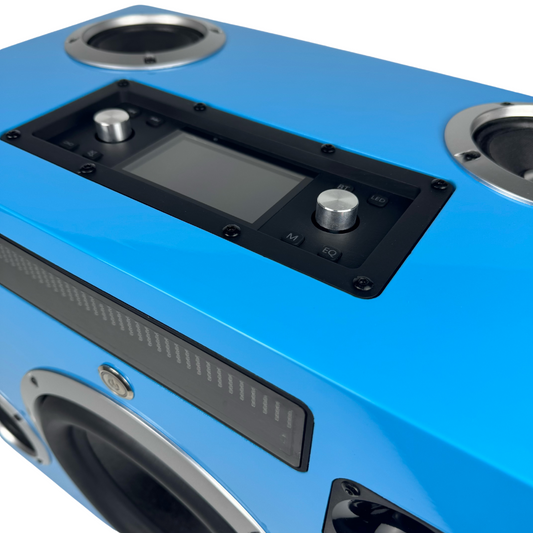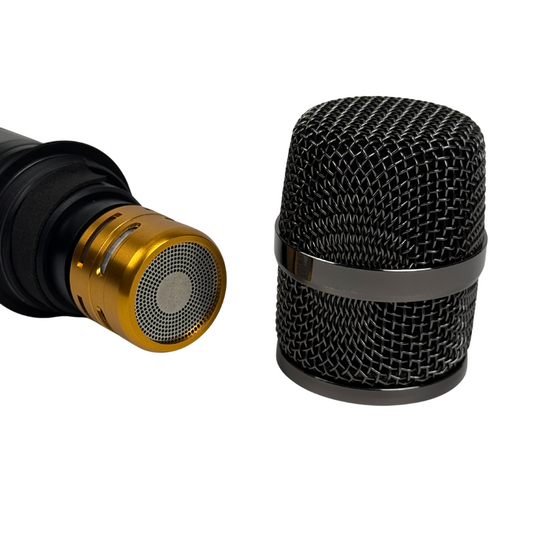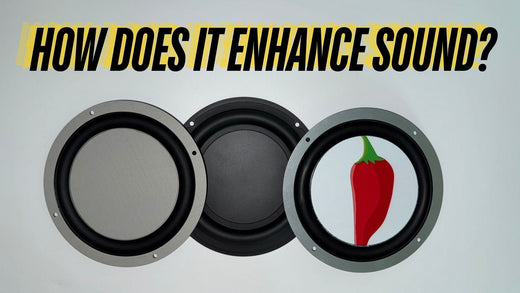
What Is a Passive Radiator?
Share
In the quest for high-quality sound, every speaker component plays a crucial role. Among the many design elements that impact sound performance, the Passive Radiator has become a popular choice for audio enthusiasts and manufacturers alike. Known for its ability to enhance bass response and improve overall sound dynamics, the passive radiator is an innovative solution in speaker design. In this blog, we’ll explore what a passive radiator is, its impact on sound, and its place in modern speaker systems.
What is a Passive Radiator?
A Passive Radiator is a speaker component that resembles a traditional driver but without an active voice coil or magnet. Unlike active drivers that produce sound through electrical signals, a passive radiator is moved solely by the air pressure changes within the speaker enclosure. Its primary purpose is to enhance the low-frequency output (bass) of a speaker without requiring additional amplification or power.
Passive radiators are typically made of the same materials as the active drivers, ensuring they move efficiently to complement the sound. They are commonly found in speakers where achieving deeper and more powerful bass is a priority, especially in compact designs where space is limited.
The Impact of Passive Radiators on Sound Quality
One of the key benefits of using a passive radiator is the improvement in bass response and overall sound dynamics. Here’s how it enhances the listening experience:
1. Deeper and More Powerful Bass
Passive radiators excel at reproducing lower frequencies. Unlike sealed designs, which can struggle to deliver impactful bass, or ported designs, which may introduce noise at higher volumes, passive radiators provide a clean, deep bass response. This makes them ideal for genres like electronic, hip-hop, and orchestral music, where low frequencies play a significant role.

2. Increased Dynamic Range
The softness of a passive radiator also plays a significant role in sound dynamics. A softer passive radiator can absorb and release energy in a way that enhances the speaker’s responsiveness to sudden changes in sound. This ability to handle rapid shifts in energy results in a more dynamic and engaging listening experience.
3. Reduced Port Noise
Ported speaker designs often suffer from "port chuffing" or noise caused by air turbulence at higher volumes. Passive radiators eliminate this issue, as they do not rely on air escaping through a port to enhance bass. This ensures a cleaner, distortion-free sound.
4. Compact and Versatile Design
Passive radiators allow for deeper bass without requiring large enclosures or additional components. This makes them perfect for compact speakers, such as Bluetooth speakers or portable systems, where space is at a premium.
Passive Radiator: Sealed or Ported Design?
*Want to learn more about the differences between a sealed and a ported design? Check this blog: Sealed vs Ported Speaker Boxes
While the passive radiator is technically considered part of a sealed speaker design, its sound performance differs significantly from traditional sealed enclosures. Here’s a closer look:
Traditional Sealed Design
In a traditional sealed speaker, the enclosure is completely airtight, and all sound is generated by the active driver. This design is known for its accuracy and tight bass response but can lack the depth and impact that many listeners desire.

Passive Radiator as Sealed Design
A speaker with a passive radiator is also considered sealed because there is no open port for air to escape. However, the passive radiator effectively mimics the benefits of a ported design by moving in response to internal air pressure changes. This provides the deeper bass and dynamic sound typically associated with ported speakers while maintaining the accuracy and cleanliness of a sealed design.
Performance Comparison
- Sealed Design: Accurate, tight sound; limited bass depth.
- Ported Design: Deep bass; potential for port noise.
- Passive Radiator Design: Deep, powerful bass with no port noise; combines the best of sealed and ported designs.
The passive radiator design bridges the gap between sealed and ported enclosures, offering a unique solution that enhances both bass performance and overall sound quality.
DioDIY’s Commitment to High-Quality Sound
At DioDIY, we are dedicated to designing and manufacturing high-quality speakers that incorporate innovative components like passive radiators. Our designs leverage the benefits of passive radiators to create speaker systems that deliver exceptional performance across all frequencies.

One example is the DioDIY Pepper Speaker, which uses advanced engineering to maximize sound output in a compact, portable design. The incorporation of cutting-edge components ensures that our speakers provide an immersive listening experience, complete with powerful bass, balanced mids, and crystal-clear highs.
Conclusion: The Power of the Passive Radiator
The passive radiator is a game-changing speaker component that combines the best elements of sealed and ported designs to deliver exceptional bass response and dynamic sound. Its ability to enhance low frequencies, increase clarity, and reduce noise makes it an essential feature in modern speaker systems.
Curious about how to choose the best passive radiator for your custom project? Click here.
While technically part of a sealed design, the passive radiator’s unique functionality sets it apart, providing a superior audio experience that meets the demands of today’s listeners. At DioDIY, we are proud to incorporate this innovative technology into our products, ensuring that every speaker we create delivers high-quality sound that exceeds expectations.
If you’re ready to experience the benefits of a speaker with a passive radiator, explore our range of products or contact us to learn more about how speaker design impacts sound performance.

